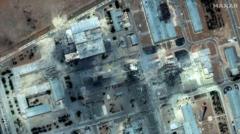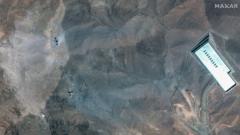Recent satellite imagery from multiple sources has unveiled the extensive damage inflicted on several of Iran's paramount nuclear and military sites, compelling a closer examination of the current situation amid escalating tensions in the region.
### Damage Assessment of Iran's Nuclear and Military Sites from Satellite Images

### Damage Assessment of Iran's Nuclear and Military Sites from Satellite Images
Analysis of recent satellite images reveals significant damage to Iran's nuclear capabilities and military assets due to ongoing strikes.
In a detailed assessment, satellite images shared with BBC Verify highlight substantial destruction at critical Iranian nuclear facilities, particularly the Natanz and Isfahan sites. Following strikes initiated on Friday, imagery from Maxar indicates damage to the pilot fuel enrichment plant at Natanz, where uranium enriched to 60% U-235 was produced, as confirmed by Rafael Grossi, head of the International Atomic Energy Agency (IAEA). The destruction witnessed aligns with speculations regarding the use of advanced penetrating bombs.
Visual verification captured shortly after the strikes depicts plumes of smoke emanating from these facilities. Despite notable damage, Grossi reported that the underground structures remain intact, alleviating immediate concerns regarding radiation leaks. Furthermore, the IAEA disclosed damage to four critical buildings at Isfahan, although radiation measurements have not increased.
Additional intelligence from Umbra Space identified damaged missile complex components near Tabriz, alongside signs of destruction at the IRGC's ballistic missile base and other military installations. Despite these advancements, satellite imagery of the Arak heavy water reactor and Fordow enrichment facility showed no visible evidence of damage, rebuffing prior claims of targeting.
As Israel intensifies its targeting strategy against Iranian positions, the potential for further retaliatory measures looms large, raising questions about regional stability.





















